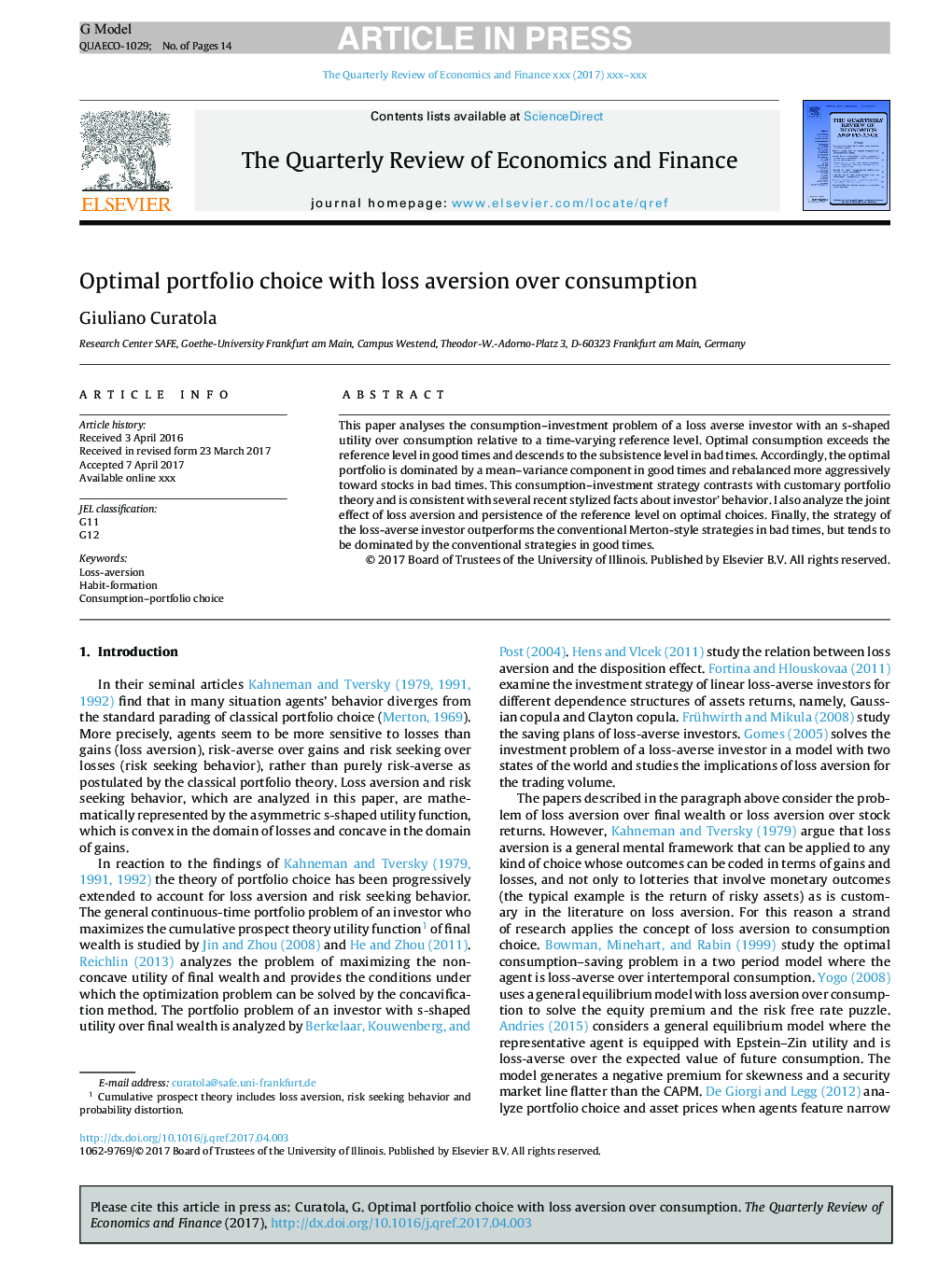| Article ID | Journal | Published Year | Pages | File Type |
|---|---|---|---|---|
| 7383582 | The Quarterly Review of Economics and Finance | 2017 | 14 Pages |
Abstract
This paper analyses the consumption-investment problem of a loss averse investor with an s-shaped utility over consumption relative to a time-varying reference level. Optimal consumption exceeds the reference level in good times and descends to the subsistence level in bad times. Accordingly, the optimal portfolio is dominated by a mean-variance component in good times and rebalanced more aggressively toward stocks in bad times. This consumption-investment strategy contrasts with customary portfolio theory and is consistent with several recent stylized facts about investor' behavior. I also analyze the joint effect of loss aversion and persistence of the reference level on optimal choices. Finally, the strategy of the loss-averse investor outperforms the conventional Merton-style strategies in bad times, but tends to be dominated by the conventional strategies in good times.
Keywords
Related Topics
Social Sciences and Humanities
Economics, Econometrics and Finance
Economics and Econometrics
Authors
Giuliano Curatola,
